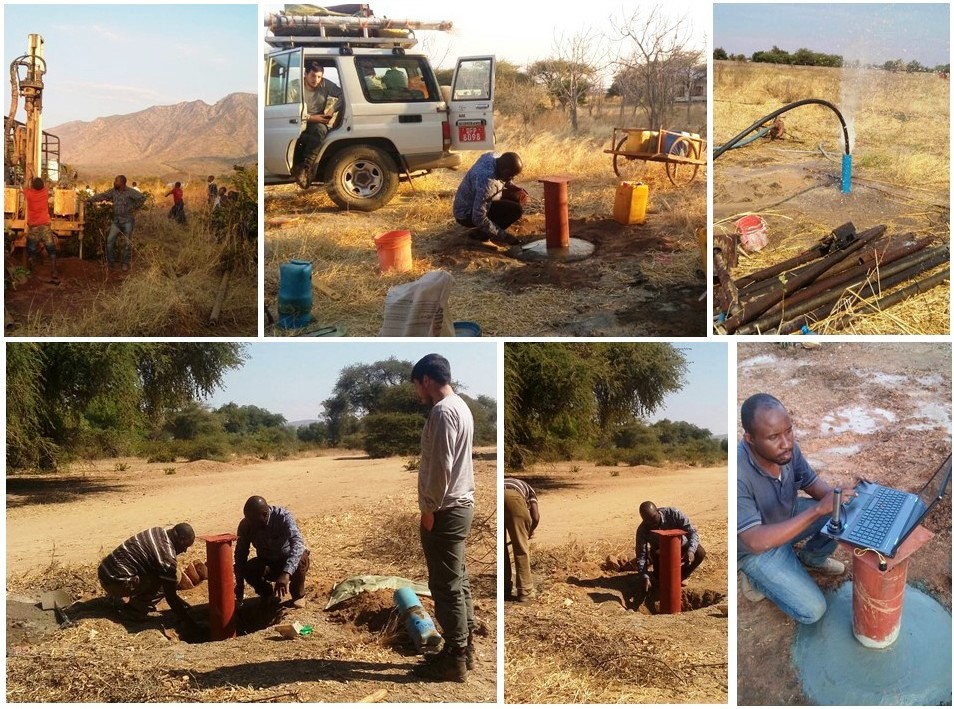
Construction of groundwater-level monitoring wells in the Upper Great Ruaha Basin Observatory in southern highlands of Tanzania at Chimala and Mbarali
The GroFutures team at Sokoine University of Agriculture (SUA, Tanzania), led by Japhet Kashaigili (SUA) with support from PhD students, Hezron Philipo (SUA) and David Seddon (UCL), established in July (2017) a groundwater-level monitoring network in the Upper Great Ruaha Basin Observatory in southern highlands of Tanzania. This area is part of the Southern Agricultural Growth Corridor of Tanzania (SAGCOT) where increased use of groundwater and surface water is anticipated to support agricultural production. Constructed monitoring wells at depths ranging from 18 to 32 m below ground were drilled using a PAT-DRILL 421 rig. The team also instrumented monitoring wells recently constructed by project partners at the Rufiji Basin Water Board (RBWB) in the Tanzanian Ministry of Water and Irrigation.
The new monitoring network comprises an upstream location at Chimala at the base of an escarpment and a downstream location at Mbarali within the alluvial plain. A monitoring well at Chimala Secondary School was installed into coarse unconsolidated sands and gravels to a depth of 26 m. This monitoring well is linked to both an additional monitoring well at Usangu Secondary School and a river gauge. Both monitoring wells are equipped with automated dataloggers providing hourly groundwater-level measurements. A third borehole was constructed at Chimala Primary School though no groundwater was encountered up to a depth of 30 m. At Mbarali, two monitoring wells were constructed on the St. Ann’s Secondary School and now form a transect of 4 monitoring wells as the team also instrumented two monitoring wells recently constructed by the RBWB at Rujewa at Mbarali Secondary School and Jangurutu Primary School.
The new infrastructure is expected to reveal for the first time the dynamics between groundwater and surface water in the Upper Great Ruaha sub-catchment of the Rufiji Basin and answer key questions around the nature of groundwater recharge and whether seasonal river flow recharges groundwater or groundwater sustains river flow. Further work will also seek to ensure that this observatory is equipped with both tipping-bucket rain gauges to record sub-daily (hourly) rainfall intensities and soil-moisture probe arrays to better understand how intense rainfalls are transmitted through alluvial soils.